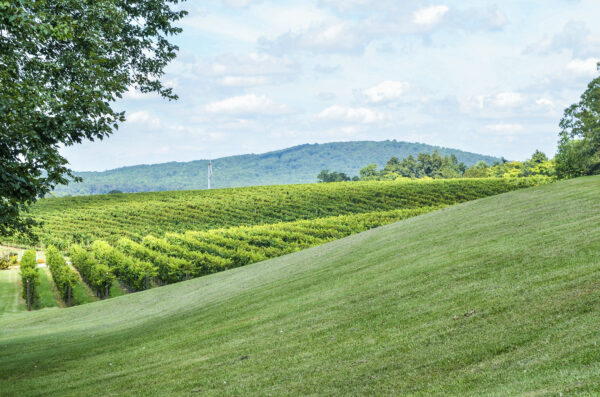Have you ever been out in Virginia wine country for a wine tasting, and the host starts tossing wine terminology around like a truck stop fry-cook slinging corn-beef-hash?
Or read a wine label where they drop terms such as the lees or punch-down, and you think, well, that must be advantageous, or otherwise, they wouldn’t include it, but I have NO IDEA what they’re talking about.
No worries, we can help, seeing that winemaking terms are often used and can add value to your enjoyment of October One Vineyard’s wine.
Wine Making
Steel fermented
Fermenting wine in temperature-controlled stainless-steel tanks has immensely improved wine production—especially white wine, where delicate flavors are enhanced and preserved by cooler fermentation temperatures.

Punch down
This term is not necessarily exclusive to MMA fighting. When used in the context of winemaking, the process of stirring the seeds and skins (optionally the stems) into the fermenting juice during red wine fermentation.
This is needed because the CO2 gas created during fermentation can push the skins and seeds upward, forming a cap that needs to be broken up. Punching down is the process of breaking up this cap, and it maximizes the goodness of skins and seeds integrating with the fermenting juice, thus extracting more tannins, color, and flavor.
MLF or Malolactic Fermentation
Malic acid is a moderately strong acid found in unripe grapes and decreases as grapes ripen. Its strength is also reduced as it is decomposed and converted to milder Lactic acid by lactic acid bacteria. This can happen naturally in parallel with fermentation.
When MLF occurs, malic acid’s tart green apple tastes and aromas are replaced by milder and creamier characteristics of lactic acid. Another by-product of this conversion is an ester called diacetyl which can express itself in a buttery flavor. For example, Chardonnay that goes through MLF will have a buttery quality that doesn’t come from oak.
RS or Residual Sugar
Fruit sugar remaining after fermentation is stopped, potentially making wine sweet. Low amounts of undetectable fruit sugar can improve mouthfeel, making wine heavier and richer.

Barrel aging
It is a standard practice to ferment or age wine in oak barrels from France, the USA, and, to a lesser degree, Hungry and Slovenia. This process imparts many good flavors, tannins, and a small amount of oxygen, improving the wines’ structure. Other wood types are used; for example, October One Vineyard’s winemakers at Walsh Family Wines use Acacia wood barrels. Acacia wood aging improves how the wine feels in your mouth and adds floral notes without the woody flavors.
Lees
About the lees, sur lie, or left on the lees. Lees are yeast cells that have completed their part in fermentation and sink to the fermentation vessel’s bottom. Leaving wine exposed to yeast cells can improve the taste and how the wine feels in your mouth. Stirring the lees is mixing the lees and wine to increase the beneficial effects, creating a yeast aroma (think of the smell of fresh-baked bread), a more complex taste, and a creamy mouthfeel. October One Vineyard’s Viognier, which ages in oak and acacia barrels, undergoes regular lees stirring.
Wine Styles
Single varietal
You’ll hear this term used as the October One Vineyard team explains their wine. The term is used for wine made from only one grape type, only using Cabernet Sauvignon grapes, for example. As for the reasoning behind making wine with only one grape type, it can be that the vintner likes this style or that they have exceptional grapes that can stand alone to create a distinct wine. Or, in some cases, it’s a marketing angle that showcases the unique, lovely characteristics of one grape type.
Sparkling Wine – Traditional method
This is a term used for making Champagne or sparkling wine where wine undergoes a second fermentation in the bottle. This second fermentation creates CO2 gas that is trapped and dissolves in the wine, making the tiny bubbles we all love.
Sparkling Wine – Charmat method
A fast and economical method for making sparkling wine where the second fermentation is done in a steel tank. It is named for the French inventor Eugène Charmat who improved and patented it in 1907.

Brut
Sparkling wine or Champagne with no detectable sweetness.
Claret
A British term used for light red wines from Bordeaux, France. Now it has become a style of wine found worldwide.
Dry
Most wine we drink is dry, and it is a wine that has no detectable sweetness after fermentation.
Estate Wine
An official term regulated by the US government implies complete control over the winemaking process from start to finish. It means that one hundred percent of the wine is from grapes grown on land owned or controlled by the winery, which must be in an American Viticultural Area (AVA), for example, the Monticello AVA of Virginia. The estate winery must crush, ferment, finish, age, and bottle the wine in a continuous process on their premises. The winery and the vineyard must be in the same viticultural area.
Wine Tasting
Aroma, bouquet, the nose
Primary aromas come from grapes. Secondary aromas come from the fermentation process. Tertiary aromas or bouquets are created as the wine develops in the bottle. FYI, the term the nose is a synonym for aroma or bouquet.